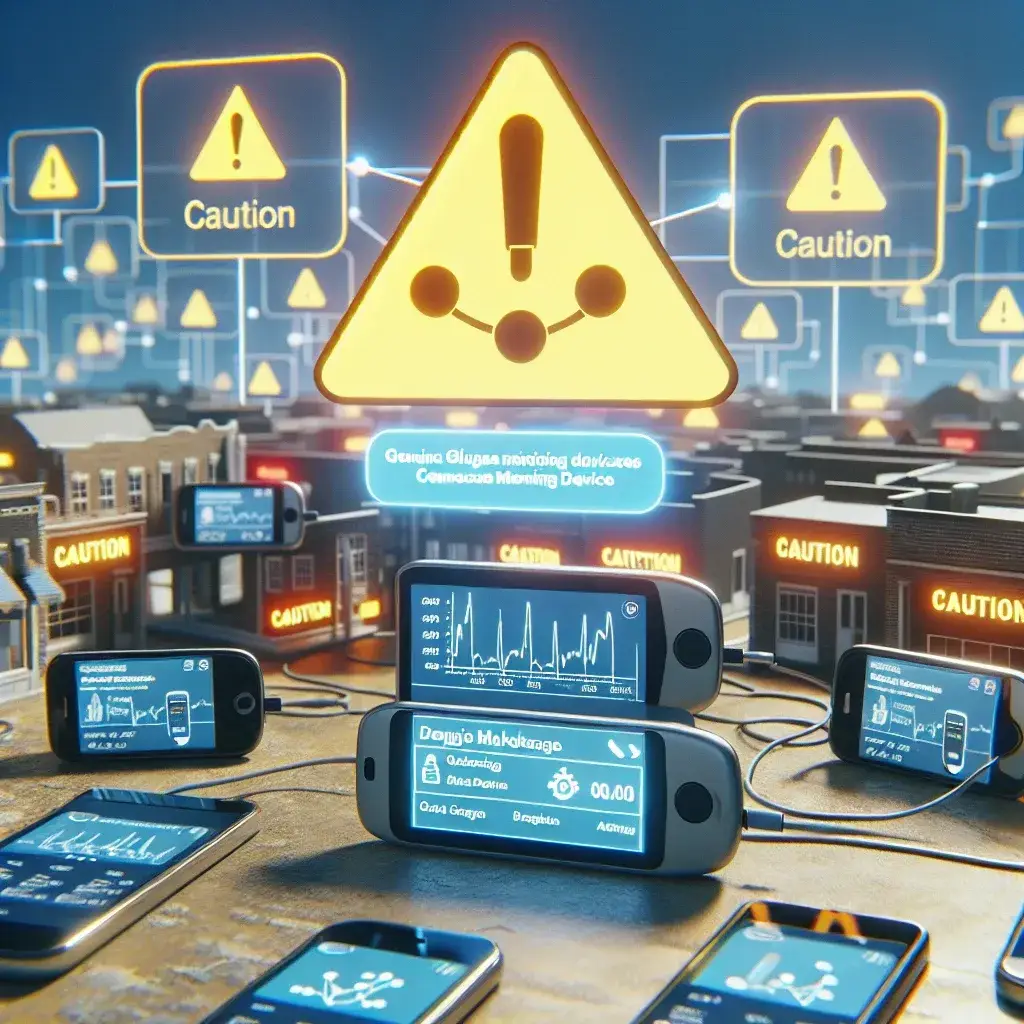Understanding the FDA’s Warning
The Food and Drug Administration (FDA) has recently issued a warning about the dangers of purchasing connected glucose monitors from unauthorized online vendors. This alert comes as a crucial reminder for both patients and caregivers about the potential perils of using medical devices that lack appropriate regulatory oversight.
The Rise of Connected Glucose Monitors
Connected glucose monitors are innovative devices that allow individuals with diabetes to track their blood sugar levels in real-time, providing invaluable data that can help manage their condition more effectively. These devices connect to smartphones or other digital platforms, facilitating easier monitoring and data analysis. However, the surge in their popularity has coincided with an increase in unauthorized sales, prompting the FDA to take action.
What Are Connected Glucose Monitors?
Connected glucose monitors are a type of continuous glucose monitoring (CGM) system that provides users with real-time glucose readings. They typically include:
- Sensor: A small device that is placed under the skin to measure glucose levels.
- Transmitter: A device that sends glucose data from the sensor to a compatible device.
- Mobile Application: Software that displays the glucose readings and trends to users.
Risks of Unauthorized Sales
The FDA’s warning underscores several risks associated with purchasing glucose monitors from unauthorized sellers:
- Quality Control: Devices sold outside the FDA’s regulated environment may not meet safety and efficacy standards.
- Data Security: Unauthorized devices may lack proper encryption, putting sensitive health data at risk.
- Inaccurate Readings: Devices not validated by the FDA could produce unreliable glucose measurements, leading to improper management of diabetes.
The Regulatory Framework
The FDA is responsible for ensuring that medical devices, including connected glucose monitors, are safe and effective for public use. Devices that are sold online must undergo rigorous testing and approval processes before they can be marketed to consumers. Unauthorized sales bypass these essential checks, which can endanger patients’ health.
Why Are Unauthorized Sales Increasing?
Several factors contribute to the rise in unauthorized sales of connected glucose monitors:
- Convenience: Many consumers turn to online platforms for easier access to medical devices.
- Cost: Unauthorized sellers often offer devices at lower prices, which can be appealing for budget-conscious consumers.
- Lack of Awareness: Some consumers may not understand the importance of purchasing from FDA-approved sources.
What Consumers Should Do
To protect themselves, consumers should take specific steps when considering the purchase of connected glucose monitors:
1. Verify Seller Credentials
Always check whether the seller is authorized and if the device has received FDA clearance. This can often be found on the FDA’s official website.
2. Research the Product
Look for reviews and user feedback about the product. Trusted health forums and diabetes organizations can provide valuable insights.
3. Consult Healthcare Providers
Before making a purchase, consult with a healthcare provider to ensure the device is appropriate for individual health needs.
4. Report Suspicious Sellers
If you encounter a seller that seems suspicious or offers a device that raises concerns, report it to the FDA. Your actions can help protect others.
Historical Context
The emergence of connected glucose monitors has transformed the landscape of diabetes management. Since the inception of traditional glucose meters, there has been a significant evolution in technology, leading to devices that not only measure blood sugar levels but also provide insights into trends and patterns. This evolution has made it easier for patients to engage with their health and enhance their treatment plans.
The Future of Glucose Monitoring
As technology continues to advance, the future of glucose monitoring looks promising. Innovations such as:
- Artificial Intelligence: AI could play a role in predicting glucose fluctuations, enhancing preventive care.
- Wearable Technology: Future devices may integrate seamlessly into everyday wearables, providing continuous monitoring without the need for finger pricks.
- Improved Connectivity: Enhanced connectivity options could lead to better data sharing between patients and healthcare providers.
Conclusion
The FDA’s warning on unauthorized online sales of connected glucose monitors serves as a critical reminder of the importance of patient safety and regulatory compliance. By remaining informed and vigilant, consumers can protect their health and ensure they are using effective and safe diabetes management tools. Always prioritize FDA-approved products to safeguard your health and well-being.
